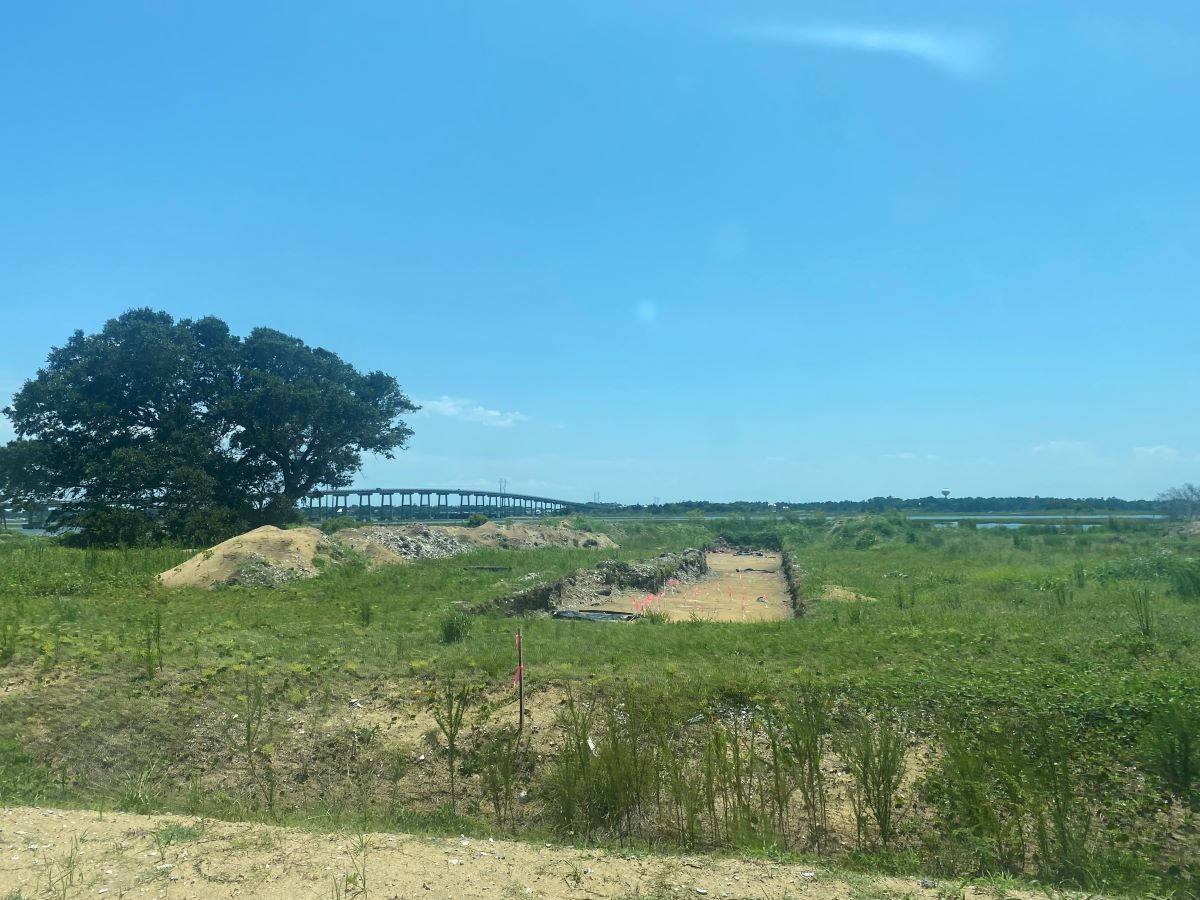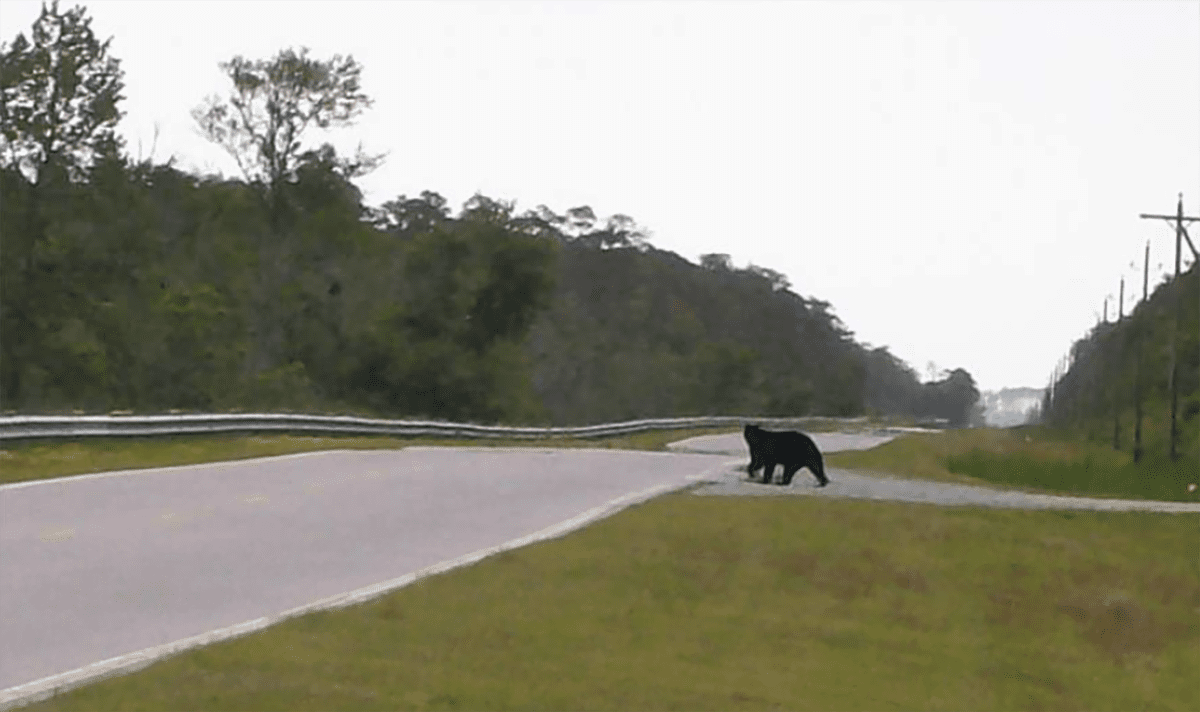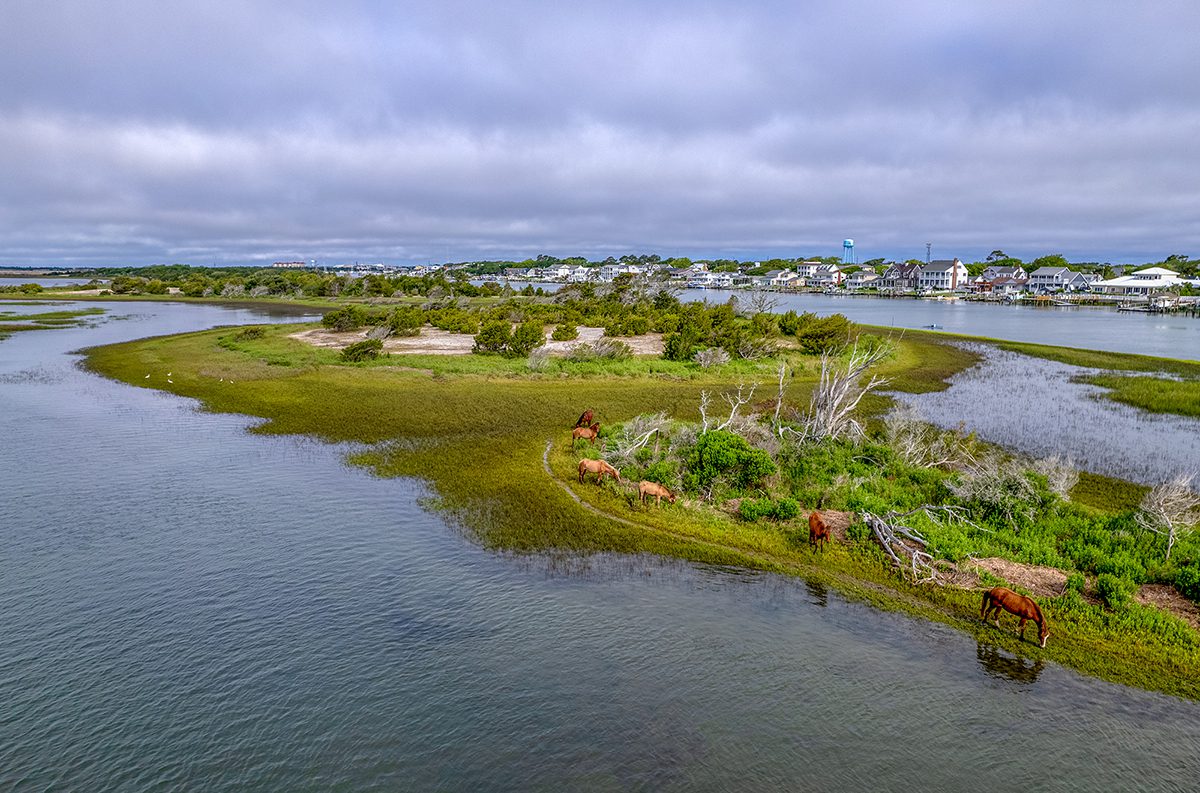First of a series
For the first time in almost three decades, the federal government is considering opening up the Atlantic Ocean off the N.C. coast to oil and natural gas drilling. The first of the many environmental studies has been drafted, the first of the many public hearings has been held. And the first of many questions has been raised.
Sponsor Spotlight
How much oil or gas is out there? When will they go get it and where will they drill? Will it come ashore somewhere along our coast? Will the price of gasoline drop as a result? Will drilling generate any jobs for local people or much money for the state treasury? Where will that oil go if there is an accident or spill?
Coastal Review Online this week begins to answer those questions and many more. This is the first of more than 40 stories that we will publish over the next two months on offshore drilling and its potential effects on the N.C. coast. In our most ambitious reporting project, seven reporters have spent several months talking to dozens of people trying to determine what drilling might mean to the state’s coastal environment, economy and lifestyle.
The Schedule
Week 1 — Science, Politics & Process
June 8: General overview of series, introduction of authors.
June 9: The history of oil exploration along the N.C. coast, including Mobil Oil Corp.’s proposal for an exploratory well off the Outer Banks in the 1980s.
Sponsor Spotlight
June 10: The federal process for leasing and permitting wells offshore and why it will likely take more than a decade to play out. The geology of the continental shelf of the East Coast and why oil or natural gas might lie beneath the sea and in what quantities.
June 11: The politics of oil in the N.C. General Assembly and what drives Gov. Pat McCrory’s push for drilling.
June 12: The geology of the continental shelf of the East Coast and why oil or natural gas might lie beneath the sea and in what quantities.
Week 2 — Pros, Cons & Reality
June 22: The pros of drilling: jobs and gas pump relief. Job creation and lower gasoline prices are among the main benefits of drilling, say its proponents. How realistic are their job forecasts and will gas prices fall if oil is found off North Carolina?
June 23: The pros of drilling: money, money, money. An oil industry study that is often quoted by proponents forecasts that North Carolina could reap more than $9 billion a year by 2035 in oil royalties and increased tax revenue. We take a hard look at the numbers.
June 24: The cons of drilling: oil spills and accidents. How likely is a spill or accident from an offshore rig and where would the oil likely go?
June 25: The cons of drilling. Intense industrialization is required to transport, store and process oil or natural gas. Is that likely to occur in North Carolina and what would the effects be on the coastal environment if it does?
June 26: Tourism and oil. The fear of what an oil spill might do to the coast’s tourism industry is at the center of much of the opposition among local governments. In North Carolina, from the Outer Banks in the north to Sunset Beach in the south, beaches and coastal towns draw more than 11 million visitors each year. In 2013 alone, visitors spent just shy of $3 billion in the eight oceanfront counties, according to the state Department of Commerce.
Week 3 — Pulse of the Coast
July 6-7: Calabash to Morehead City. We poll coastal residents about their support for offshore drilling and send a reporter to spend a week traveling along the southern coast talking to people about the prospects of drilling off our shores.
July 8-9: Corolla to Morehead City. Another reporter travels the northern coast to gauge the sentiments of residents there.
July 10: Morehead City or Wilmington. We explore whether these port cities along the central coast could become a staging and supply port for the drilling rigs and what that mean for a tourist town.
Week 4 — America’s Oil Coast
Fall: We send a reporter to the heart of the country’s oil region along the Gulf of Mexico where he reports back on life amid the oil rigs and refineries.[/su_shaded_box_right]
We’ll run the results of all that reporting on alternate weeks, starting this week with stories about the history of drilling in North Carolina, the geology of the Atlantic Ocean and why oil or gas might be out there, the federal process that manages offshore drilling and the politics in Raleigh that are promoting it.
Other stories in the series will explore the potential benefits of drilling to the state’s economy and the likely environmental effects on the coast in the event of a spill or accident. We’ll poll coastal residents to gauge their support for drilling, and two reporters traveled the coast, from Calabash to Corolla, talking to people about the subject.
Setting the Stage
First, though, let’s catch up as to where we are.
The Obama Administration did the expected in late January and announced plans to potentially open portions of the Atlantic coast, including offshore North Carolina, to oil and natural gas drilling for the first time since Mobil Oil proposed an exploratory well off the Outer Banks in the mid-1980s.
In keeping with Obama’s all-of-the above approach to energy development, the federal Bureau of Ocean Energy Management, or BOEM, released a draft five-year leasing plan that would begin in 2017. The plan includes all federal waters 50 miles off the mid- and south-Atlantic coasts, from the mouth of the Chesapeake Bay to the Georgia-Florida border. Also included in the plan are areas in the central and western Gulf of Mexico and off the north coast of Alaska.
The proposed leasing plan is the initial step in a long, tortuous federal permitting and review process for offshore leasing, exploration and finally production. That process for the Atlantic, where no wells exist, will take more than a decade to play out if it continues to move forward.
The announcement followed a decision by the Obama administration last year to allow companies to use sound waves to survey the seafloor in the Atlantic in search of oil and natural gas. These so-called seismic tests are controversial because critics charge that they can harm marine mammals, such as whale and dolphins.
BOEM has since received 10 applications from companies to conduct the tests. Four of those applicants want to survey off North Carolina’s coast and more applications are expected, according to state regulators. The state has approved three of the applications so far, and testing could begin later this year.
Battle Lines Form
Offshore drilling has a contentious history along the N.C. coast, and it soon became clear that a fight is brewing this time as well. The first skirmish was in Wrightsville Beach about a month after BOEM announced the leasing plan. The spark was the first of the agency’s two public hearings in North Carolina on the plan.
Drilling proponents gathered that afternoon across the waterway in downtown Wilmington. Over boxed lunches supplied by the country’s largest oil industry trade group, the crowd of mostly businessmen listened to speakers extol the benefits of drilling: good-paying jobs, money for state and local budgets, energy independence and strengthened national security.
The message mirrored the one that Gov. Pat McCrory has been taking all across North Carolina. As the leading drilling cheerleader in the state, McCrory has promoted offshore drilling in testimony before Congress, urged BOEM to allow exploration closer to shore and supported exploring for oil and natural gas within three miles of the state’s coastline. He also heads a group of East Coast governors who have been urging Obama to open up the Atlantic to drilling.
Using an industry-sponsored economic study, McCrory has said offshore drilling will provide thousands of new jobs in the state and contribute more than $9 billion to the state treasury by 2035. In later stories, we’ll explore the accuracy of those predictions and the oil industry’s close ties to the governors’ group that McCrory heads.
There wasn’t much talk about jobs at the press conference that 10 environmental groups held at the hotel where BOEM had its meeting that day in Wrightsville Beach. The BP Deepwater Horizon was the featured attraction. One wall was dominated by a huge photograph of the oil rig that exploded in the Gulf of Mexico in 2010 in the worst oil spill in U.S. history. It was engulfed in flames and ringed by fire boats spewing jets of water.
Speaker after speaker raised the specter of oil-encased seabirds, blackened beaches and a dying tourism economy if something like that were to happen here. We’ll examine the likelihood of all that during the second week of the series.
More than 400 people attended the BOEM hearing that day in Wrightsville Beach. Almost 700 showed up a month later at a similar hearing in Nags Head, the largest turnout in BOEM’s five-year history.
“I would say we have heard from a lot of people who are opposed,” an agency spokeswoman said afterwards.
At least a dozen communities along the coast have passed resolutions opposed to offshore drilling, seismic testing or both.
And in Manteo a group of old oil warriors began organizing again for a fight they thought they had won 25 years ago.
Tuesday: Mobil Oil and the history of drilling along the N.C. coast.
Covering the Issue
Seven reporters and editors will be involved in this series on offshore drilling as it unfolds over the next two months.
Here they are:

Frank Tursi: The editor of Coastal Review Online, Tursi conceived of this project, was its lead editor and wrote several of its stories. The author of three books, Tursi was a 30-year newspaper journalist before joining the N.C. Coastal Federation in 2002. He was the senior environmental reporter in North Carolina and was among the lead reporters of Mobil Oil Corp.’s proposal in the mid-1980s to drill an exploratory well of the N.C. coast. His environmental journalism has won numerous awards, including three Public Service Awards from the N.C. Press Association and the Scripps-Howard National Environmental Journalism Award. An avid fishermen and model boat builder, Frank lives with his wife, Doris, in Swansboro.

Catherine Kozak: A longtime reporter on the Outer Banks, Kozak also traveled the coast talking to residents about offshore drilling. Born and raised in the suburbs outside New York City, Kozak worked for 15 years for The Virginian Pilot. During her career, she has written about dozens of environmental issues, including oil and gas exploration, wildlife habitat protection, sea level rise, wind energy production, shoreline erosion and beach nourishment. Kozak has a journalism degree from the State University of New York at New Paltz. She lives in Nags Head and covers the Outer Banks and the northeast coast for Coastal Review Online.

Tess Malijenovsky: The assistant editor of Coastal Review Online, Malijenovsky helped plan the project and edit its stories. She was also one of two reporters who traveled the coast talking to residents about offshore drilling. Malijenovsky joined the N.C. Coastal Federation in 2013. She grew up in Charlotte and received her bachelor in fine arts degree in creative writing at the University of North Carolina Wilmington where she was editor-in-chief of the university’s literary arts magazine, Atlantis.

Brad Rich: Rich has written about fishery and environmental issues along the central N.C. coast for 30 years. For this series, he delved into the potential environmental and social effects of offshore drilling. Currently a reporter for the Tideland News in Swansboro, Rich covers the central coast for Coastal Review Online. He lives in Hubert with his wife, Gwen, their 18-year-old daughter and a rambunctious black lab named Satchmo.
 Kirk Ross: A longtime N.C. journalist based in Chapel Hill, Ross is the lead legislative reporter for Coastal Review Online. He explored the political support for offshore drilling in the N.C. General Assembly. Ross’ reporting and opinion pieces have appeared in multiple publications, including the Independent Weekly, in Durham. He is also the founder of The Carolina Mercury, an online N.C. politics website.
Kirk Ross: A longtime N.C. journalist based in Chapel Hill, Ross is the lead legislative reporter for Coastal Review Online. He explored the political support for offshore drilling in the N.C. General Assembly. Ross’ reporting and opinion pieces have appeared in multiple publications, including the Independent Weekly, in Durham. He is also the founder of The Carolina Mercury, an online N.C. politics website.
 Kip Tabb: Every reporting project like this needs a guy like Tabb. He’s fascinated by process and how things work. So he was given the job of explaining the byzantine federal permitting and monitoring process that will play out over the next decade or more if offshore drilling is pursued on the East Coast. A freelance writer on the Outer Banks, Tabb has covered transportation, environmental and related topics for a number of publications. He writes regularly for Coastal Review Online. He’s the former editor of the North Beach Sun, a quarterly newspaper on the northern Outer Banks covering community interest issues.
Kip Tabb: Every reporting project like this needs a guy like Tabb. He’s fascinated by process and how things work. So he was given the job of explaining the byzantine federal permitting and monitoring process that will play out over the next decade or more if offshore drilling is pursued on the East Coast. A freelance writer on the Outer Banks, Tabb has covered transportation, environmental and related topics for a number of publications. He writes regularly for Coastal Review Online. He’s the former editor of the North Beach Sun, a quarterly newspaper on the northern Outer Banks covering community interest issues.
 Trista Talton: Talton covers the southeastern N.C. coast for Coastal Review Online. Her assignment for this project was to explore the potential benefits of drilling, including the jobs it could spawn and the money it could provide to state and local governments. Talton is a native North Carolinian who, after graduating from Appalachian State University in 1996, pursued a career in journalism. She has covered everything from education and local governments to law enforcement and military. She embedded with Marines in Kuwait for the start of the Iraqi war in 2003, spent time in New Orleans with N.C. National Guardsmen in the aftermath of Hurricane Katrina and lived on a Coast Guard cutter to write about patrolling the shores of New York and New Jersey following the Sept. 11 attacks. She lives with her husband and two sons in Jacksonville.
Trista Talton: Talton covers the southeastern N.C. coast for Coastal Review Online. Her assignment for this project was to explore the potential benefits of drilling, including the jobs it could spawn and the money it could provide to state and local governments. Talton is a native North Carolinian who, after graduating from Appalachian State University in 1996, pursued a career in journalism. She has covered everything from education and local governments to law enforcement and military. She embedded with Marines in Kuwait for the start of the Iraqi war in 2003, spent time in New Orleans with N.C. National Guardsmen in the aftermath of Hurricane Katrina and lived on a Coast Guard cutter to write about patrolling the shores of New York and New Jersey following the Sept. 11 attacks. She lives with her husband and two sons in Jacksonville.







